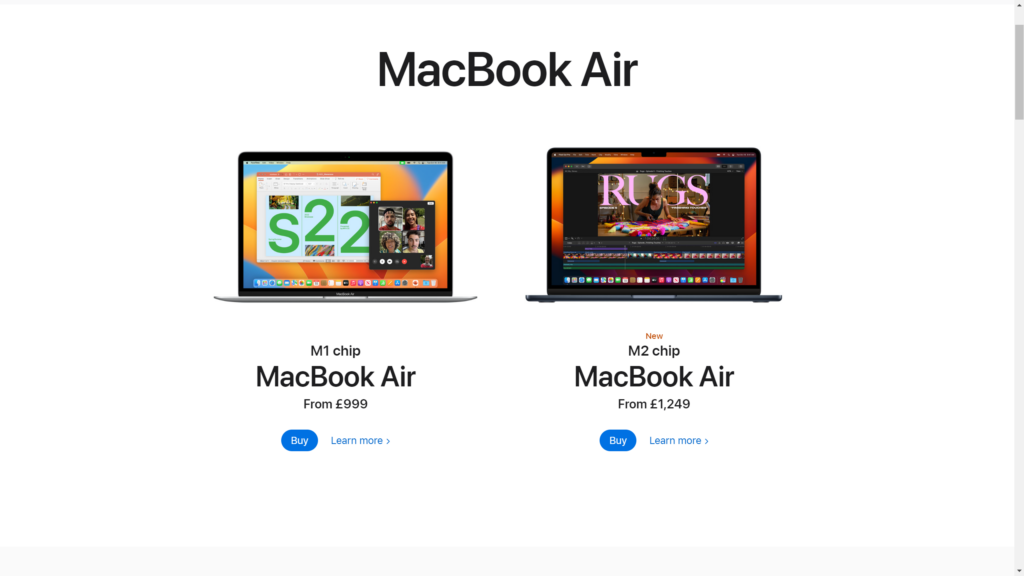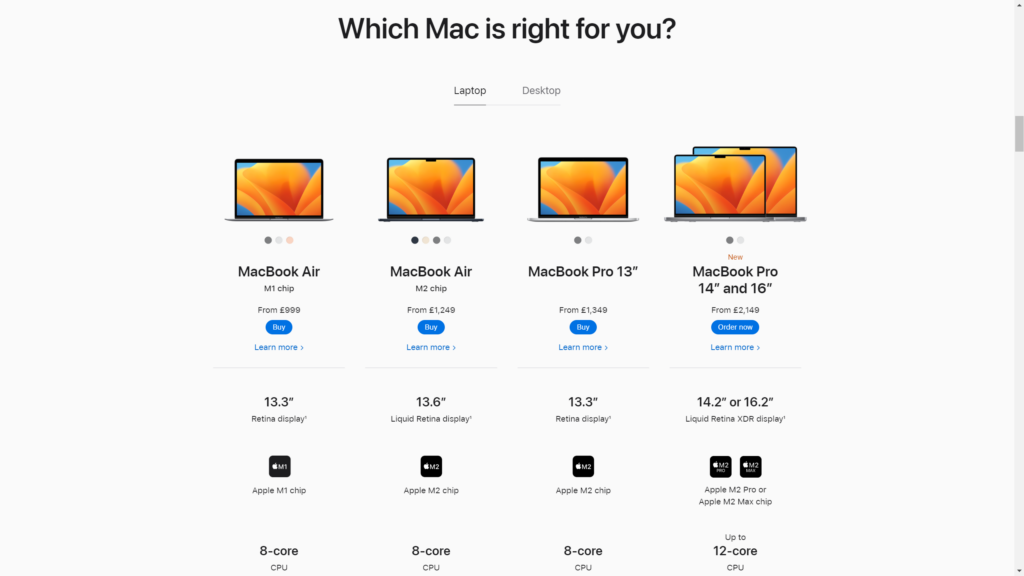Ctrl+Alt+Delete: Apple should start selling old MacBook Pro laptops

Apple launched new iterations of the MacBook Pro this week, with upgrades to the M2 Pro and M2 Max chips boosting the performance to new heights.
While I didn’t expect the new laptops to arrive so early in the year, it’s no shock to see Apple refreshing its MacBook Pro line since the last update was back in 2021.
But I was surprised to see Apple scrub off any mention of the MacBook Pro M1 Pro / M1 Max on its official website, removing the ability to purchase the slightly outdated laptop.
This is at odds with Apple’s tactics with the MacBook Air. When the M2 configuration launched last year, Apple didn’t ditch the older M1 model. In fact, both MacBook Air laptops are still available to buy on the Apple website right now.

It would look strange if both the MacBook Air laptops were available at the same price, but there’s a £250 difference. This way, Apple can cater to both those who want a cheap-as-possible MacBook and those who’d prefer an ultra-portable computer with a flagship performance.
But if you want to buy a new 14-inch or 16-inch MacBook Pro from Apple’s website, there’s only the option for the most recent configurations.
This has created a notable imbalance in the MacBook range. If the £2149 asking price of a 14-inch MacBook Pro is too expensive for you, then the next cheapest laptop that Apple offers is the 13-inch MacBook Pro at £1349, which is a massive price difference.
And while you can admittedly hike up the price of the 13-inch MacBook Pro by upgrading the memory and storage, you’re still limited to the M2 chip, which isn’t really powerful enough for professional content creators.

Despite being a generation behind, the M1 Pro is actually a more powerful chip than the M2. That’s because it’s packing more CPU cores (10 instead of 8) and GPU cores (16 instead of 10). As a result, it’s a better option for professional craters than even a 13-inch MacBook Pro with maxed-out specs.
The M1 Pro flavour of the 14-inch MacBook Pro originally launched for £1899. Knock £100 off due its age, and the slightly outdated MacBook would slot into the existing range nicely. Apple would then have a better range of prices on offer, catering to a wider pool of customers. It’s a no-brainer from my perspective.
I do appreciate that Apple won’t want to get into a situation where it’s still selling products that launched over five years ago. But the MacBook Pro with the M1 Pro chip only launched in 2021 – there are far older devices being sold on Apple’s online store right now.
Plus, it’s not atypical for Apple to sell outdated devices. Right now, you can buy an iPhone 12, 9th generation iPad, and 2nd generation AirPods. So why is the MacBook Pro being treated differently?

I also have to wonder what Apple does with its stock for the older MacBook Pro. At the start of the week, you were able to buy a MacBook Pro with an M1 Pro chip from the store. I don’t believe all of that stock has been sold within a matter of days.
With having such a big focus on sustainability, I imagine Apple isn’t chucking away leftover samples. It’s most likely sending these laptops off to third-party sellers, or maybe even reserving the parts for future repairs.
But I still feel that Apple is missing a trick by not selling the older MacBook Pro laptops on its website. And while there are plenty of third-party sellers offering the laptop, such as Amazon and Currys, removing the laptop from the official website doesn’t exactly instil confidence that Apple is going to continue to support the laptop for the long term.
So come on Apple, stop forcing the latest configurations of the MacBook Pro upon us, and let us choose our preferred configuration. That way, everybody wins.
Ctrl+Alt+Delete is our weekly computing-focussed opinion column where we delve deeper into the world of computers, laptops, components, peripherals and more. Find it on Trusted Reviews every Saturday afternoon.








